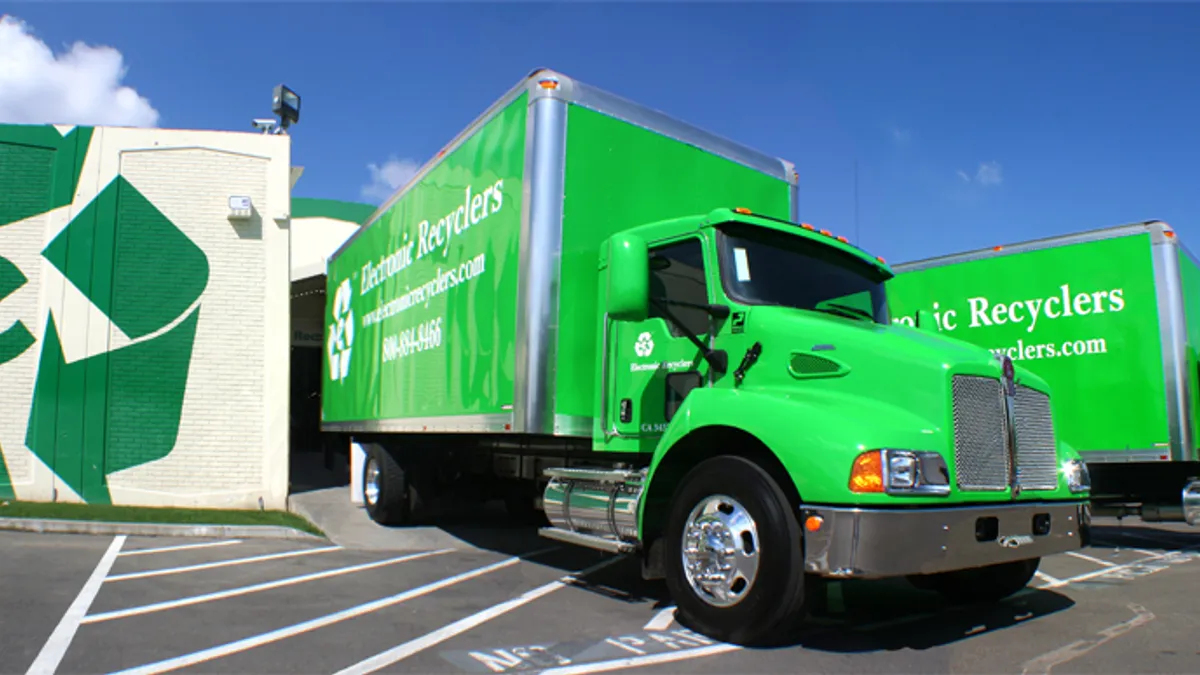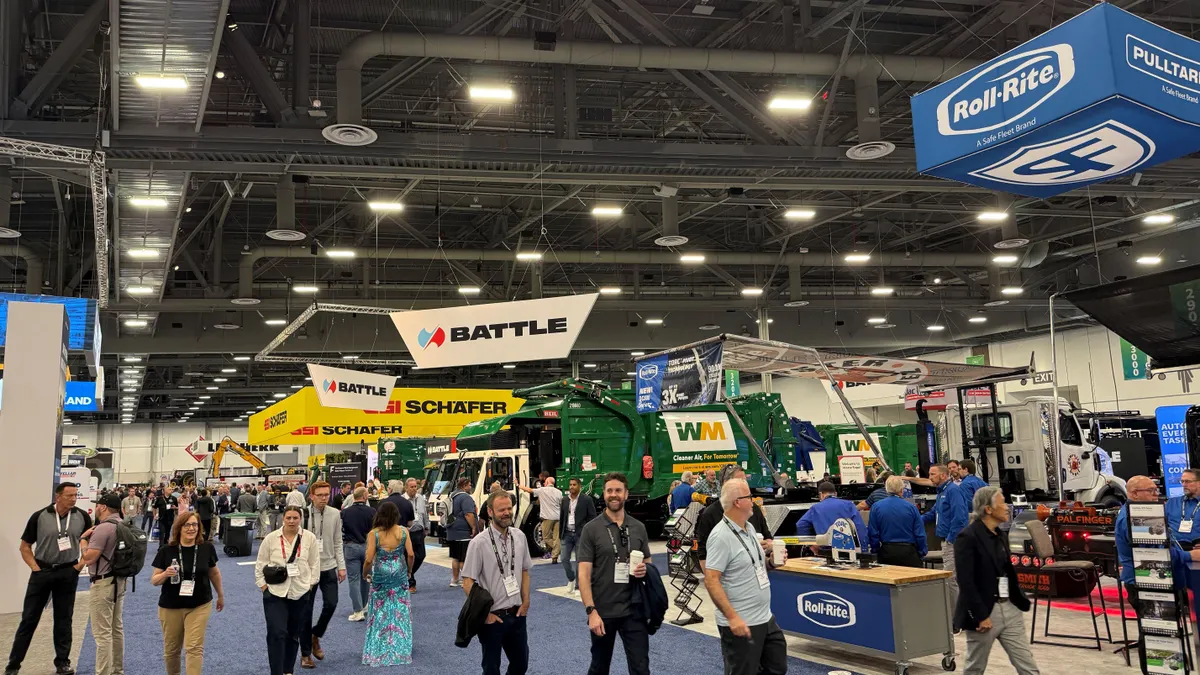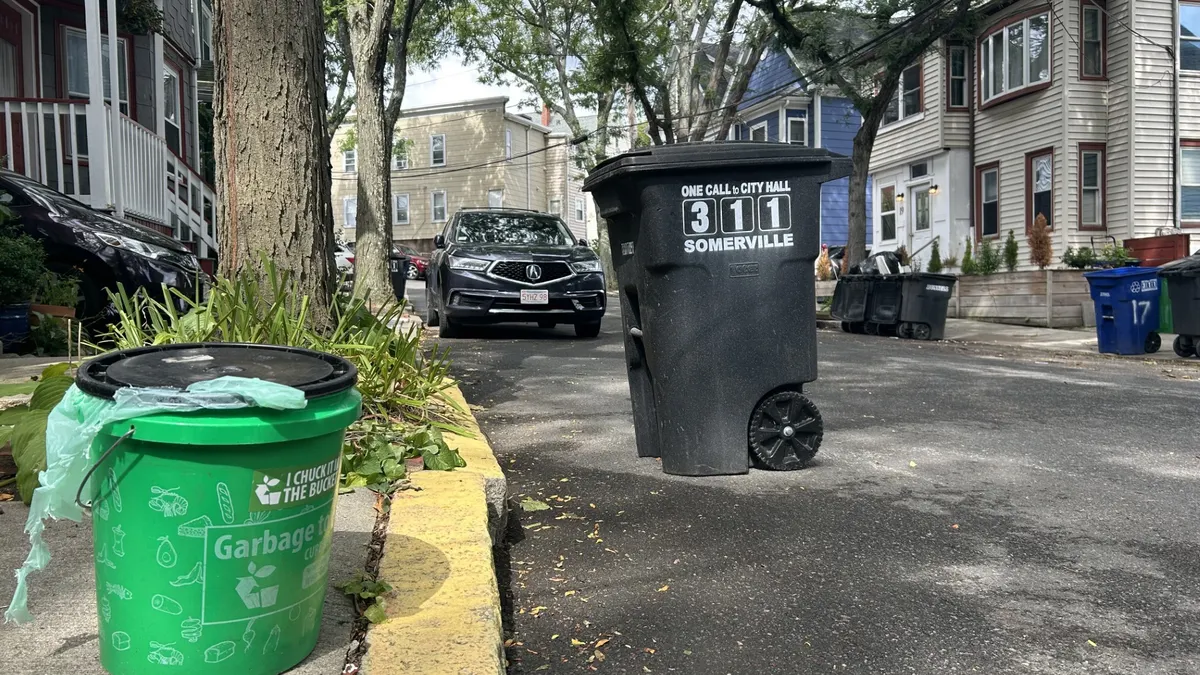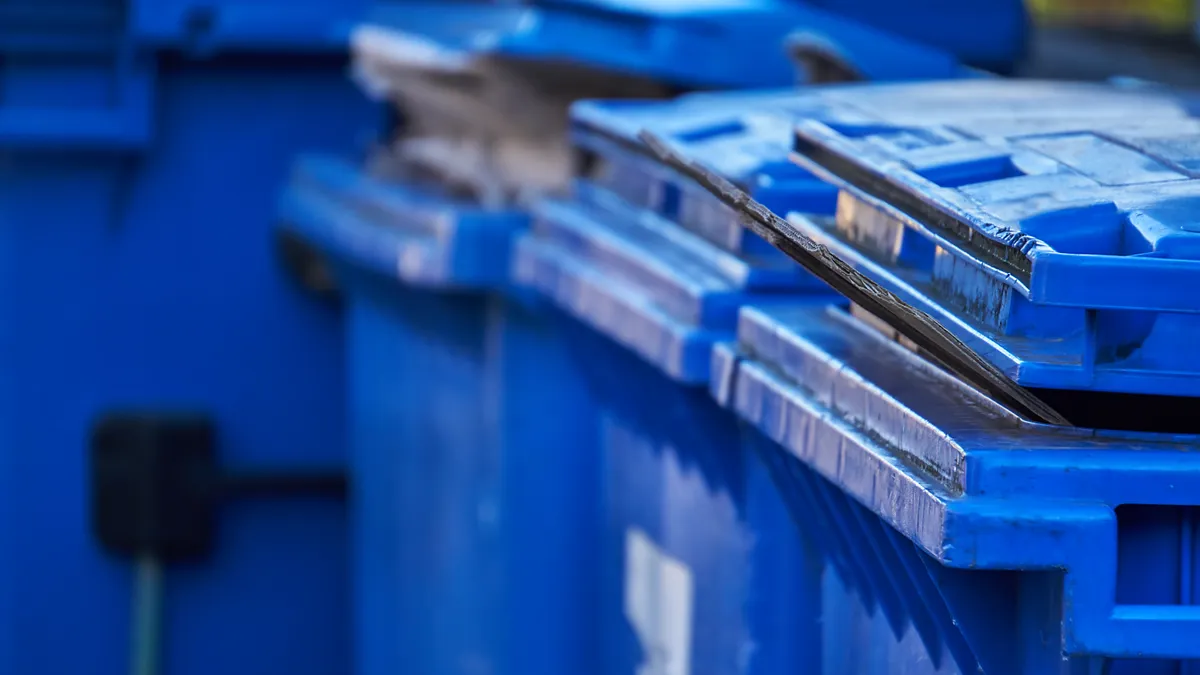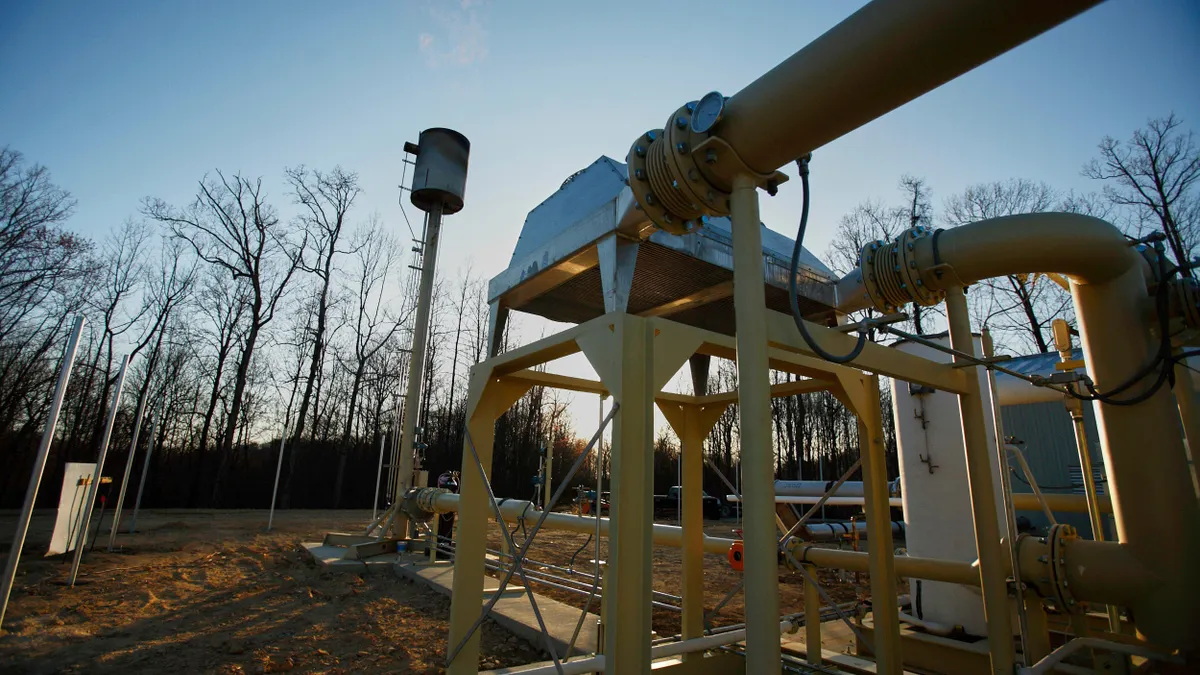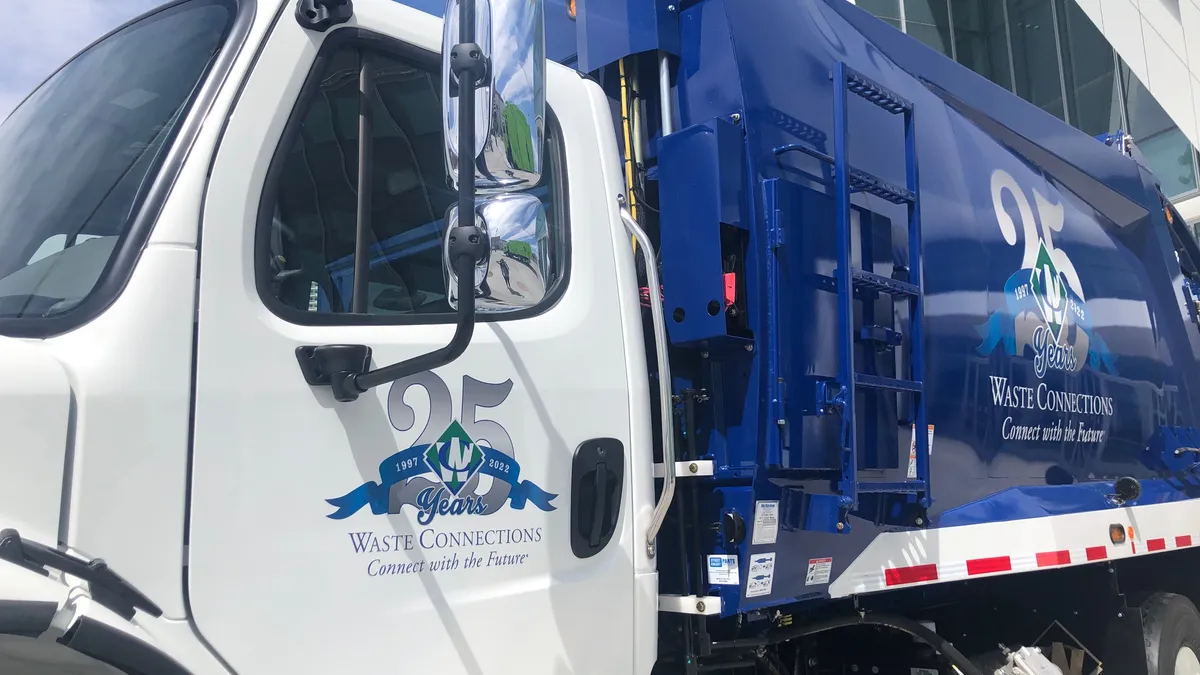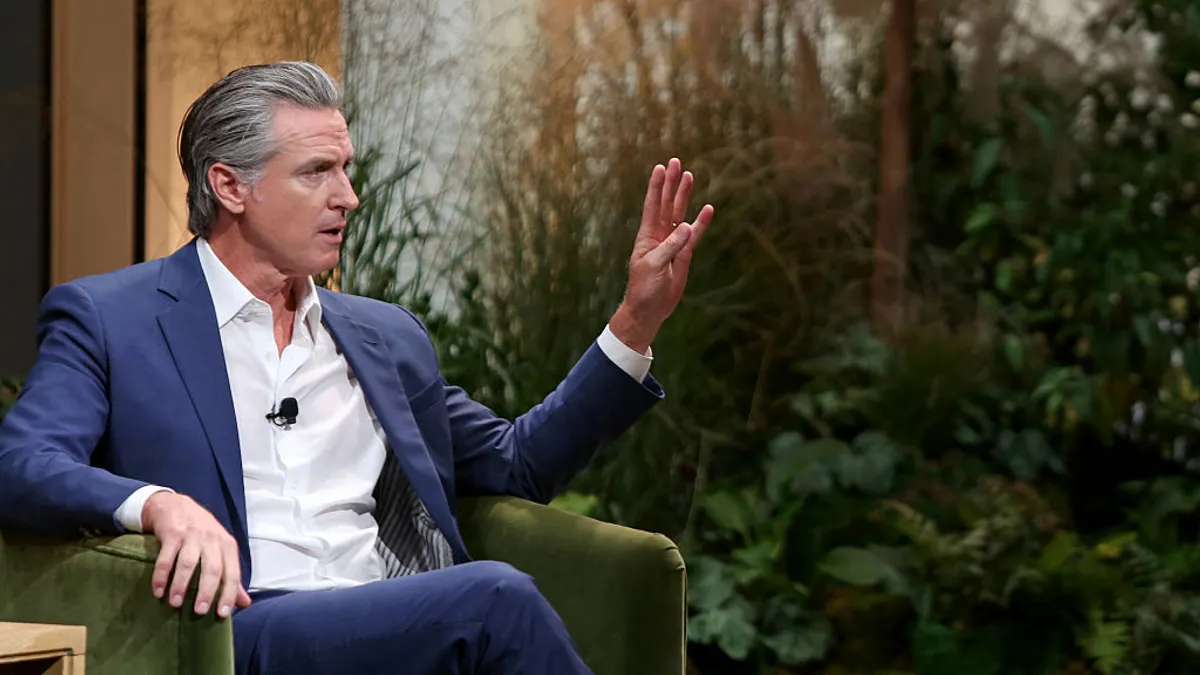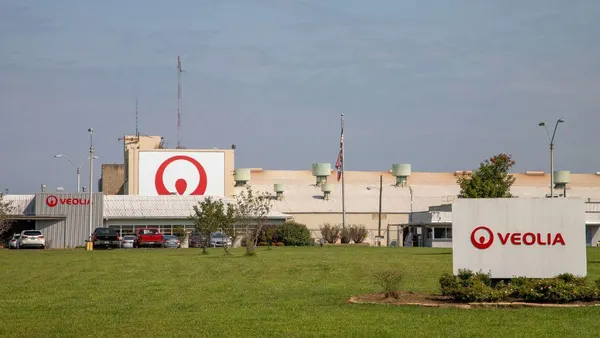John Shegerian, ERI’s CEO and co-founder, is on the road again. His company has made a name for itself as one of the largest electronics recyclers in the country, expanding over the years to do business in about 140 countries.
Advancements in the electronics at the heart of ERI’s business model are also the reason Shegerian travels about 175 days a year, he said.
“With technology, with AI, nobody knows what’s real or fake anymore. But having real, personal relationships with clients and strategic partners – that’s what sets us apart,” he said. “The interpersonal relationships you build with people face to face are now more important than ever before.”
In the last few years, ERI has expanded its footprint across the U.S. It opened a new battery recycling plant in Indiana in 2024 and is getting ready to open an electronics recycling and IT asset disposition facility in Georgia. The company also plans to announce several international partnerships this year. This comes at a time when the U.S. government aims to prioritize domestic recycling initiatives in an effort to get back critical materials from electronics.
ERI is also balancing domestic and international business expansion with sustainability initiatives Shegerian said further set his company apart in a competitive field. “It doesn't matter if you’re Republican, Independent or Democrat, everyone agrees that we want to leave the environment better than how we found it,” he said.
Shegerian talked with Waste Dive about ERI’s latest carbon neutral and zero waste initiatives, its focus on its battery and e-scrap services, and its relationship with the current Trump administration.
This interview has been edited for length and clarity.
Domestic recycling infrastructure for electronics and batteries has seemed to really pick up in recent years, and you yourself have said competition can be fierce. What are ERI’s priorities in this space, and how is it mapping its own growth?

Only 22% of all electronics being used today and sold and used on this planet today are being responsibly recycled. That still leaves a massive 78% delta for myself and all of my competitors to chase. People ask why I’m friends with my competitors, and it’s because we can learn a lot from them, and it's not a zero-sum game. There's so much stuff to recycle that we can all do very well together. It's really an industry of collaboration, and collaboration is what's going to make the biggest impact.
One example of collaboration that we’ve had going since about 2005 is the electronic take-back programs with Best Buy and Staples, which is now the second most successful take-back program in the world for batteries and electronic waste. We also manage the Salvation Army take-back program now. We’re always trying to get the word out, get more education and activation, because people want to do the right thing with electronics, they just don't know where it exists.
When we take back all the batteries at Staples, you know about 85% of these postconsumer batteries are alkaline batteries. Our technology so far is doing very well at our recycling plant in Indiana, [which focuses on alkaline battery recycling]. It's closed loop, no emissions, and we create and sell a wonderful black mass there.
At the same time, we're opening other infrastructure. In the fourth quarter we plan to open our northwest Georgia location, which will do ITAD and electronics recycling, and we plan to continue to grow in other parts of the United States as well.
We are also going to grow outside of the country. We’re getting more and more business in Asia, Canada, Southeast Asia and the Middle East. We're going to be opening locations in those regions in the next 12 months in the form of ERI owned and operated [facilities], with partners in those regions.
ERI recently published its latest sustainability report, which says the company is the first in its industry to become carbon neutral. What steps did you take to do that, and why are these specific sustainability metrics important?
We started our company around 23 years ago, which is a lifetime ago when it comes to technology. That was before any company had a chief sustainability officer and “circular economy” wasn’t a word yet.
It does cost ERI more and requires more intentional work to be carbon neutral and to achieve zero waste. You just don't write a check and buy your way into it. Our carbon neutrality and zero waste efforts stand out really fast compared to our competitors.
All our big clients like the retailers, OEMs, cities and municipalities — they all have to answer to somebody and create sustainability or impact reports. We're one less problem on their balance sheet. We're not creating more scope 1, 2 or 3 issues for them.
The fact is, we have strategic partners that are investors and board members of ERI, so everyone knows where our materials go. Batteries go right to Redwood Materials. Alcoa gets all of our aluminum and LS MnM gets all of our copper and precious metals. People know there's no brokers. They see the transparency to that.
We have eight big facilities across America, but we never had a head of procurement until about two years ago, which is kind of embarrassing. Having a head of procurement is Sustainability 101. The march towards carbon neutrality becomes a lot easier when you're buying right and when you're diverting right.
No one's truly zero waste. We're at about 2.3% to 2.7% that goes to a hazardous waste landfill, but the rest gets diverted. Those efforts all came from our procurement and also from our chief sustainability officer efforts to increase and improve our diversion.
Our sustainability officer and his team also look into how to power our facilities with green energy such as solar, and then whatever we can't do ourselves at the end of the day to zero out and reconcile this, then we'll buy credits.
The Trump administration has been pretty clear that it wants to see more investments in domestic manufacturing and the recovery of critical materials, which it says is important to stay internationally competitive and reduce reliance on other countries. What’s ERI’s role in these larger federal priorities?
In the last nine months, we've met with leadership from Canada, the United States and Japan. They all are interested in the same thing. They don't want to decouple from China, but they want to de-risk their resources and supply chain. The question on their minds is, “How can we recycle more electronics domestically and keep those material resources domestically?” And that's what we've been asked to advise on.
ERI had an office in Washington, D.C. for 10 years under both Republican and Democratic administrations, and we would walk the halls to meet with both sides of the aisle. Each side gave us wonderful lip service. The Republican people typically say, “We love the job growth that you're doing in our communities.” The Democrats would say, “We love what you're doing for the environment.”
What’s different with the Trump administration, love them or hate them, is that this is an administration of doers. They've come to us and said, “Give us specifics. How can we retain more electronics, domestically speaking, and keep our resources domestic?” They ask practical questions and they’ve followed up with us numerous times. That’s never happened in all the years I had an office in D.C.
By the way, the Canadian and Japanese governments are doing the same thing. I know each one of those administrations is going to do a lot more to make their countries safer and more independent and de-risk their supply chains. This is a high, high priority for all administrations of those three countries. This is just not idle chatter.
ERI is known for electronics and battery recycling, but you also do a fair amount of plastics recycling because of the plastics in electronics. How has that area of the business evolved over the years, especially in the context of your zero waste goals?
Plastics have always been important to us. We built proprietary shredders back in 2008, and they have been upgraded every year. Those shredders create cleaner commodities, and smelters want the most liberated resources and commodities to smelt, because certain plastics will ruin their smelters.
When OEMs started realizing that circularity and sustainability were trends, they all created design for sustainability divisions. One of the ways they want to make their products greener and more sustainable is by avoiding buying virgin plastic and instead buying back recycled plastic from me. We make sure it goes to a good vendor who can meet our specs. We've been working with OEMs for the last 15 years on this, but now more and more OEMs are doing that. What they're realizing is that young people are voting with their pocketbooks and want to buy greener and greener products.
We've chased this space vigorously for 15 years, and we continue to chase it. We continue to find great vendors on different continents that can help us recycle our plastic that we create in those continents and then also fulfill the needs of our OEMs.


